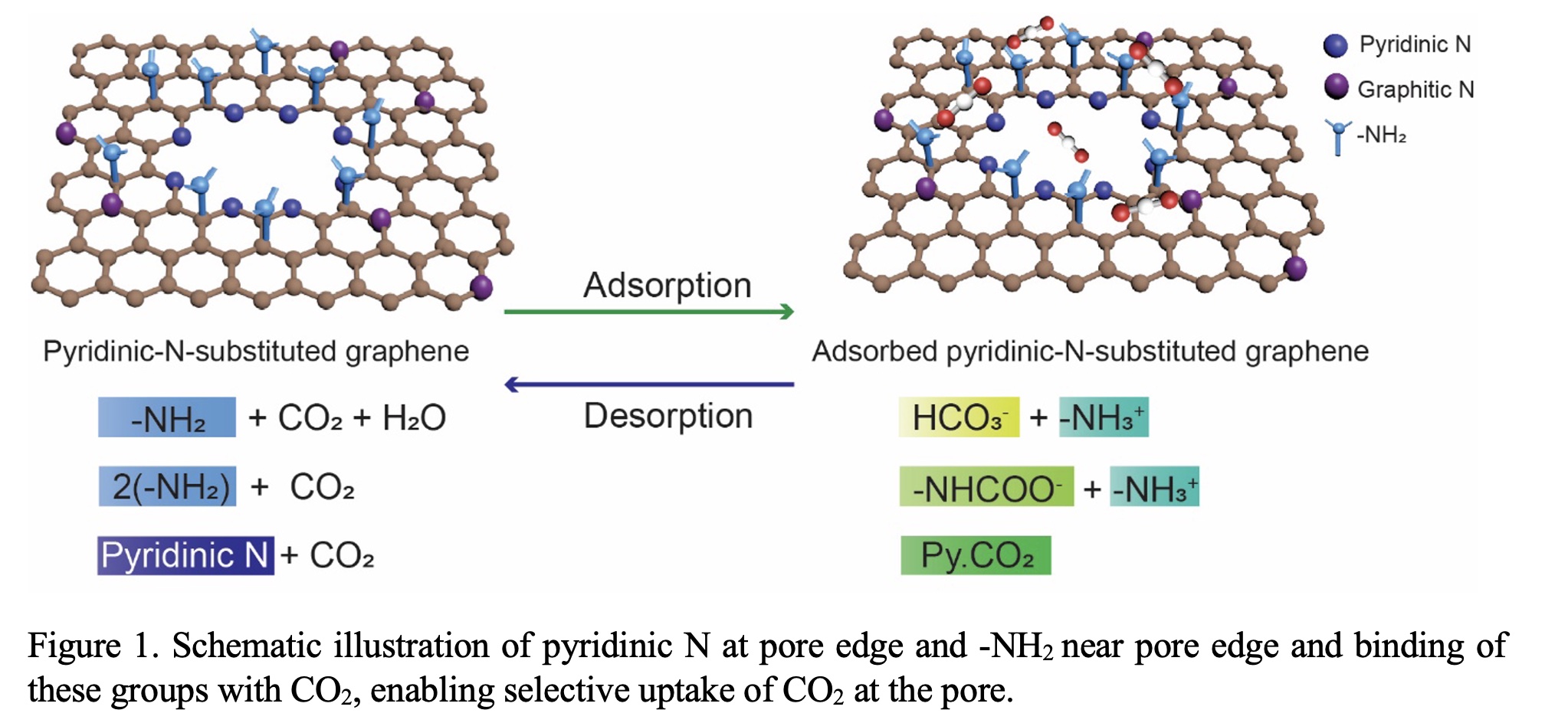2023 AIChE Annual Meeting
(397f) Pyridinic Nitrogen Substituted Two-Dimensional Pores for Rapid and Selective CO2 Transport from Graphene Membrane
Authors
Kumar Varoon Agrawal - Presenter, École Polytechnique Fédérale De Lausanne (EPFL)
Kuang Jung Hsu, École Polytechnique Fédérale De Lausanne/Gaznat
2D films hosting tailor-made pores have the potential to achieve high-performance membrane-based molecular separation, and can mimic rapid and selective transport from the biological systems.[1] Porous single-layer graphene is an ideal 2D film for this purpose because the atom-thick pores in graphene minimize diffusional resistance for molecular transport.[2] While 2D pores in graphene are ideally suited for ambitious high-performance carbon capture, a longstanding challenge in achieving this arises from difficulties in tightly controlling the pore size distribution in a scalable manner. In this presentation, I will show a strategy for improving the tolerance with respect to pore size distribution by increasing the binding affinity of CO2 with the pore.[3] This comprises of heteroatomic doping of the pore edge with pyridinic N to promote competitive CO2 uptake via electrostatic interactions (Figure. 1).[4] Pyridinic N has been reported to complex with CO2 driven by the Lewis acid-base interaction which involves a donation of electron charge from N (Lewis base) to CO2.[5] N at the pore edge was placed by reducing oxidized graphene film by NH3 where a spontaneous N-H dissociation has been predicted to promote N doping in the lattice. The incorporation of pyridinic N is confirmed by the emergence of N1s peak in the high-resolution X-ray photoelectron spectroscopy (XPS). Spontaneous but reversible uptake of atmospheric CO2, in the form of complexed product, is observed. This is also corroborated by imaging pores using low-temperature scanning tunneling microscopy (LTSTM) where pores appear occupied and empty upon adsorption and desorption cycle, respectively. The high- affinity results in a high loading even from a dilute CO2 feed which led to the realization of high CO2 permeance (14190±1880 GPU) combined with a high CO2/N2 selectivity (43.7±7.5).
References
- Epsztein, R., DuChanois, R. M., Ritt, C. L., Noy, A. & Elimelech, M. Towards single-species selectivity of membranes with subnanometre pores. Nanotechnol. 15, 426â436 (2020).
- Villalobos, L. F.; Babu, D. J.; Hsu, K.; Van Goethem, C.; Agrawal, K. V. Gas Separation Membranes with Atom-Thick Nanopores: The Potential of Nanoporous Single-Layer Graphene. Accounts Mater. Res. 3 (10), 1073â1087 (2022).
- Hsu, K.; Li, S.; Micari, M.; Chi, H.; Zhong, L.; Francisco, L.; Huang, S.; Duan, X.; Züttel, A.; Agrawal, K. V. Pyridinic Nitrogen Substituted Two-Dimensional Pores for Rapid and Selective CO2 Transport. Submitted. Under review.
- Luan, B. et al. Crown Nanopores in Graphene for CO2 Capture and Filtration. ACS Nano 16, 6274â6281 (2022).
- Lim, G., Lee, K. B. & Ham, H. C. Effect of N-Containing Functional Groups on CO2 Adsorption of Carbonaceous Materials: A Density Functional Theory Approach. Phys. Chem. C 120, 8087â8095 (2016).

